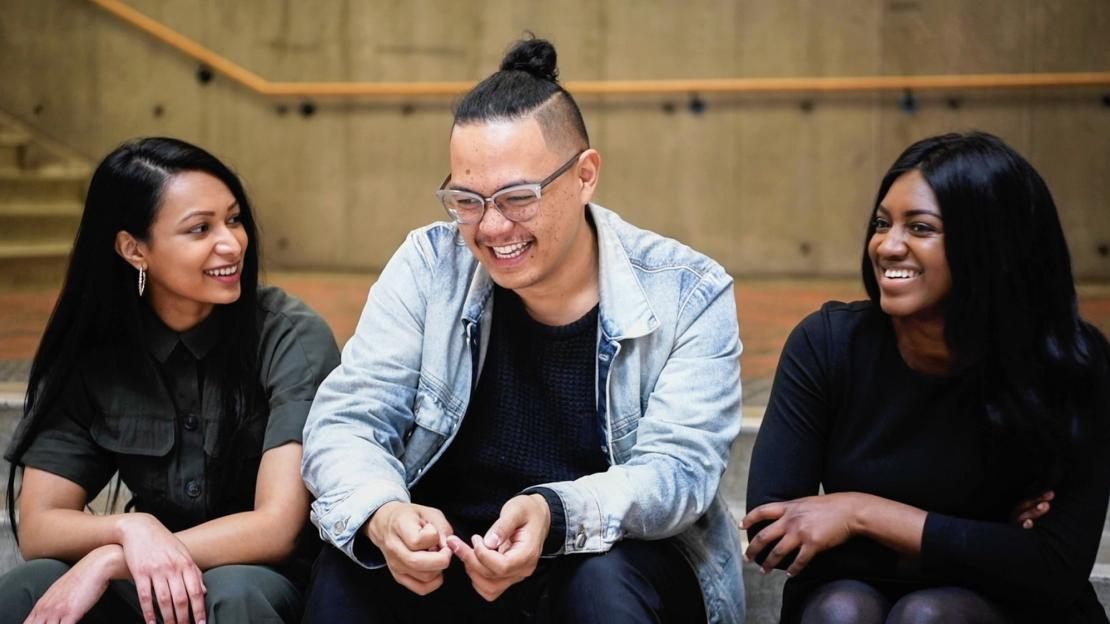A group of U of T Scarborough writers are putting out feelers for emerging writers to submit work for an upcoming anthology.
Téa Mutonji, Adrian De Leon and Natasha Ramoutar encourage prospective writers to think about how they want to speak back to Scarborough when writing about the east end, whether they still live here or not.
“A lot of who we are as individuals has to do with the space that we occupy,” says Mutonji. “Scarborough has such a powerful influence on people and they have no idea how.”
The trio, all students from U of T Scarborough’s creative writing program, are accepting poetry, creative non-fiction and fiction writing from emerging writers for FEEL WAYS, an upcoming anthology which sets out to define Scarborough, the east end, as a character and living space.
“Scarborough writing has to make you feel ways,” says De Leon, who wrote his latest collection of poems, Rouge, in part as a response to the 2012 Danzig shooting, through poems written at every subway station in Toronto. “It has to compel you to do something; it has to compel you to snap or go out and take action.”
“Part of it was a counterculture movement,” Ramoutar says of the book’s formation. “We are fighting against this idea that good literature has to be written in a certain way.”
Starting this collection gives them control over the depictions of Scarborough and how its story is told. Respectively, Mutonji’s newly released Shut Up You’re Pretty tells the story of a girl navigating her womanhood in the east end. Ramoutar’s essay, These Four Cement Walls, traces the beauty and communities within Scarborough as her capoeira group searched for a new home.
The team references Carrianne Leung’s That Time I Loved You, Catherine Hernandez’s Scarborough and Brother by David Chariandy as providing a national platform for east-end stories. Each were unique versions of the east-end suburb — ranging from Leung's depiction of Scarborough before it was amalgamated into Toronto to Hernandez's very recent version — yet every story was connected through the sense of community attributed to Scarborough.
“I think there's this misconception about Scarborough, like there is one Scarborough voice, when in fact, it's a chorus of voices,” Ramoutar says. “That's how I've always seen Scarborough's creativity.”
Along with the politics of transit, negative media depictions have contributed to Scarborough’s discourse of violence, poverty and (literal) disconnection.
But that doesn’t mean Scarborough’s creativity comes from poverty or violence.
“It's actually a place of joy and love,” Mutonji says. “You come and spend a few months here and you’ll see that it's a community.”
Capturing the life in Scarborough is what De Leon describes as “palimpsest.” Think about the pencil grooves left on the page after you erase them. Building a life in Scarborough is like writing new stories over those grooves, while being conscious of how that page was occupied before you, he says.
Mutonji notes that despite the recent spotlight on Scarborough’s creativity, media attention on art coming out of the area is not a “breakthrough from suffering.”
“We've always been telling each other stories about the history, the geography and the uniqueness of daily life of living in Scarborough,” De Leon says. “It's just now that people are paying attention.”
“We’re here to stay,” Ramoutar adds.
The team will be accepting poetry up to 100 lines, fiction and creative non-fiction up to 1,500 words. Candidates who have more than one book published will not be considered. Submit your work here.
